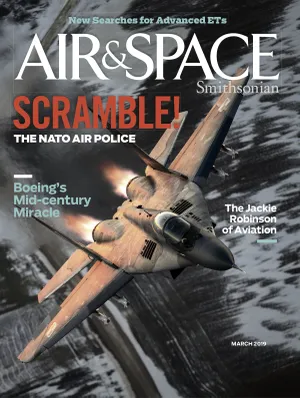This F-15 Pilot Holds the NORAD Record for Interceptions
“For Whatever Reason, When I Was on Alert, They Flew.”
/https://tf-cmsv2-smithsonianmag-media.s3.amazonaws.com/filer/85/0d/850d5183-db0c-4ceb-add2-7231c4954a46/09a_fm2019_policinginlithuania1_live.jpg)
Captain Rick Von Berckefeldt today flies Boeing 737s for Southwest, but he once flew USAF air defense interceptors during what turned out to be the twilight of the cold war before the collapse of the Soviet Union in 1991. There were tense times in those last years. In 1988, von Berckefeldt’s F-15C made a record breaking 11 intercepts of Soviet military aircraft—10 Tupolev Tu-95 Bear bombers and one Illyushin Il-18 “Coot,” a turboprop similar to the Lockheed P-3 Orion. He was awarded an Air Medal, but von Berckefeldt says his record was a matter of Soviet operational priorities and sheer coincidence.
For von Berckefeldt, flying F-15s against unknown “bogeys” was an exciting change from routine. “The phraseology was ‘unknown rider,’ he recalls. “So it’s ‘We have an unknown rider, bearing 270 degrees, 400 miles.’ As the airplane gets closer and closer, the chatter level gets higher.”
The Bears generally came in two models and from two directions, he recalls. “Bear Hotels,” nuclear-capable bombers, came over the North Pole; “Bear Golfs” were cruise missile carriers. Staying in international airspace (if at the very edge), they flew from Petropavlovsk in Kamchatka northeast “up the chain” of the Aleutians.
Intercepts were always calm and professional, von Berckefeldt says, but he still felt the buzz of excitement when he spotted the Red Star on a bogey’s tail. The routine was to close within 500 feet of the target and photograph the aircraft, taking special note of any unusual antenna, nacelles, and visible weapons. Von Berckefeldt was never one for waving hello at “enemy” pilots. He could see their heads but not much else, he recalls (though he once noticed a crew member stretched out on a Bear Hotel’s glass observation blister, sound asleep). Then, taking position between the Bears and the U.S. coast, von Berckefeldt would escort them on their way.
